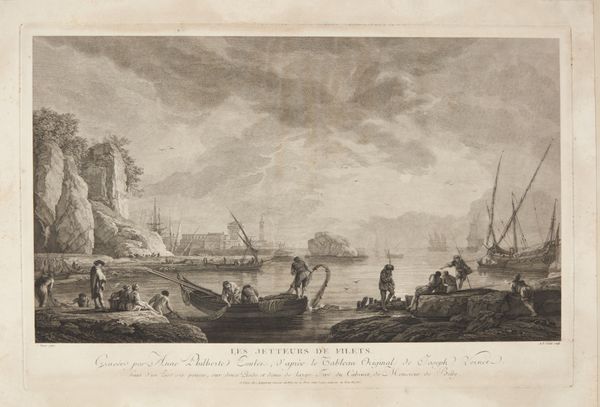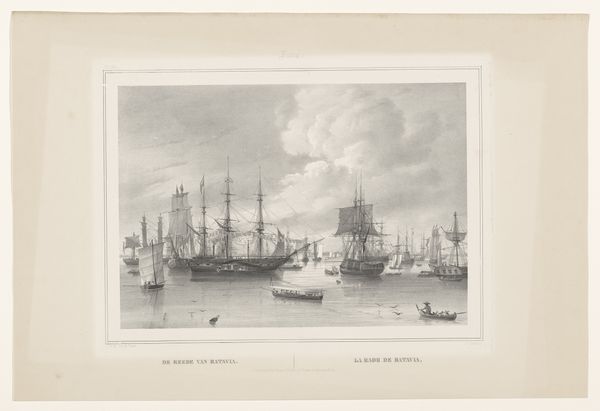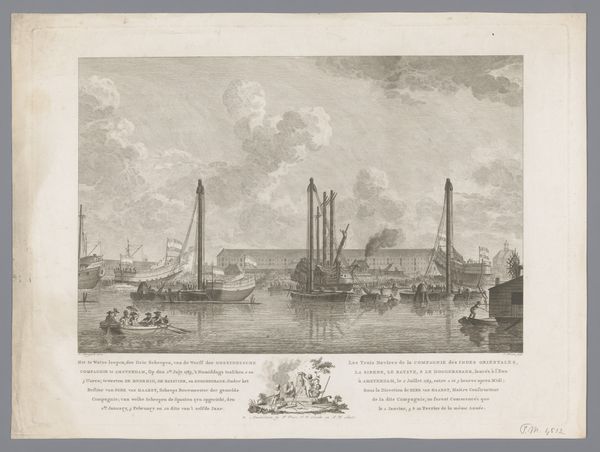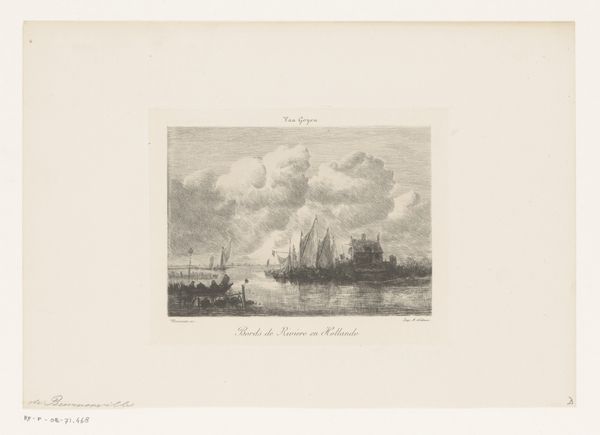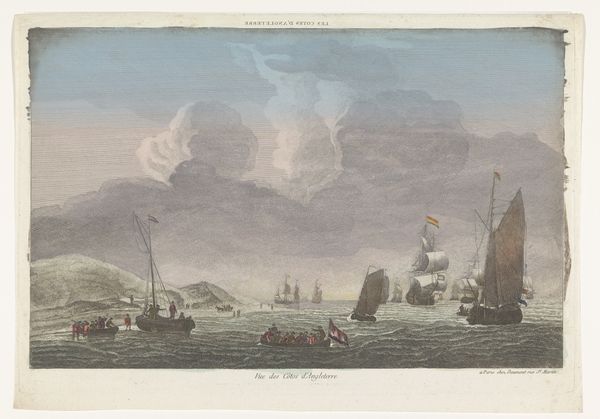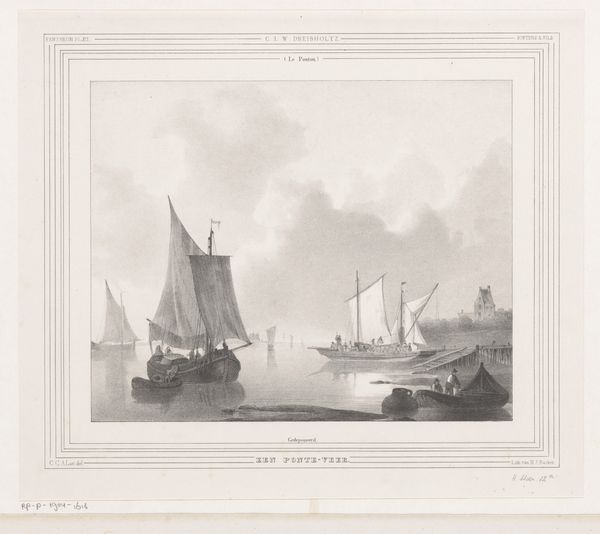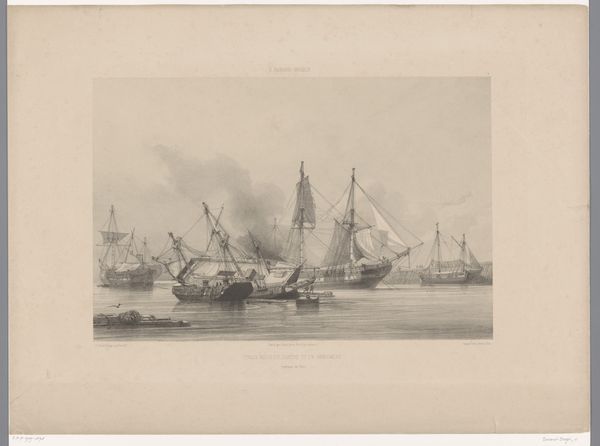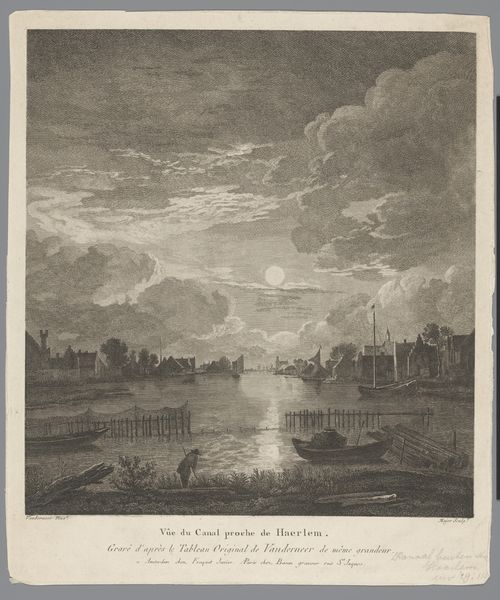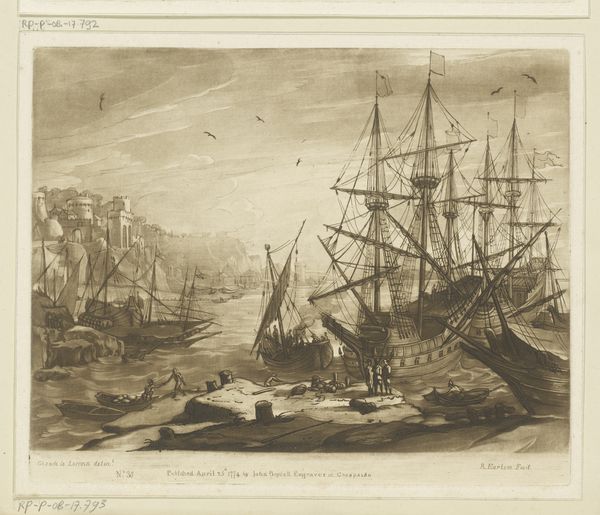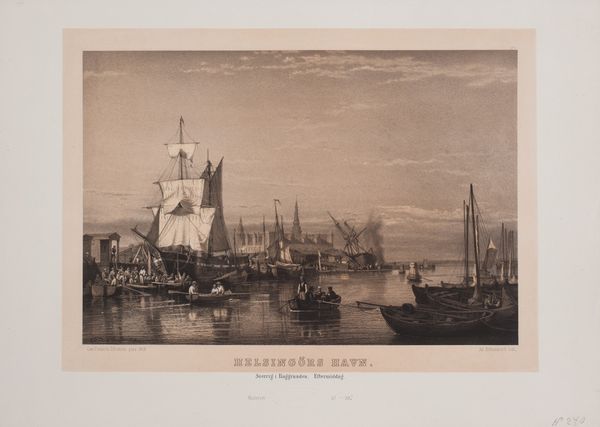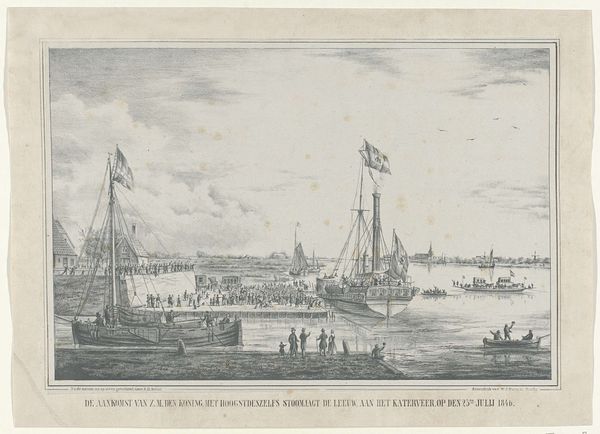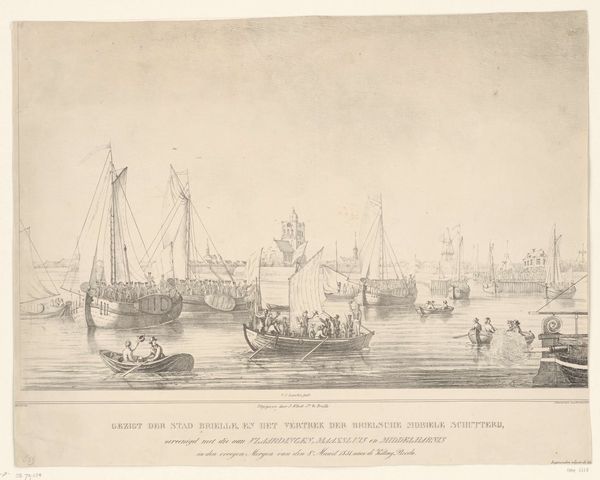
Wedstrijd van de Nederlandsche Zeil- en Roeivereeniging, op het Y te Amsterdam, op zaturdag 30 September 1848 1848
0:00
0:00
willembal
Rijksmuseum
print, engraving
#
dutch-golden-age
# print
#
old engraving style
#
cityscape
#
genre-painting
#
engraving
#
realism
Dimensions: height 199 mm, width 238 mm
Copyright: Rijks Museum: Open Domain
Curator: This print, titled "Wedstrijd van de Nederlandsche Zeil- en Roeivereeniging, op het Y te Amsterdam, op zaturdag 30 September 1848," by Willem Bal, offers a snapshot into a vibrant event in Amsterdam's past. Editor: It feels both chaotic and contained. All these boats and people crammed into one scene—a social snapshot in a specific moment of leisure and competition. Curator: Notice the composition—how the artist uses the massed crowds on the banks and the assortment of vessels as framing devices. Symbolically, the competition speaks to the growing commercial and civic confidence of Amsterdam at that moment. Editor: I'm immediately thinking about who has access here. We see an event dominated, most likely, by wealthy citizens who have the leisure time and the means to participate in this regatta or observe from the banks. The boats themselves would be emblems of that economic power. Curator: That's a astute point. Sailing and rowing clubs would absolutely have reflected and reinforced existing social stratifications. What’s interesting too, beyond the overt depiction of the regatta, are the latent, almost submerged narratives: of trade and maritime identity so fundamental to Dutch self-understanding. The location of the race on the "IJ" is very significant. Editor: Right. The very waterscape signifies connection—the 'IJ' being this vital waterway linking Amsterdam to the broader world, supporting trade and solidifying Amsterdam’s identity. The dark smoke signals the era’s early industrialization; what does this say about the city's progression towards modernity? Curator: You are asking if the dark clouds could be interpreted in a less favorable light. Symbolically they may represent, to an extent, the industrialization and modernization occurring, but at the cost of obscuring nature and tradition. Editor: Perhaps the artist invites viewers to contemplate what is gained or lost when "progress" occurs. What kind of visual statement is Bal making here about Dutch identity as it relates to both class and capital? Curator: It is fascinating to delve into the potential tensions between progress, tradition, and the uneven distribution of wealth that shaped Amsterdam. Editor: Absolutely, considering it through the lens of social access enriches my understanding of this detailed cityscape—Bal documented more than just a race.
Comments
No comments
Be the first to comment and join the conversation on the ultimate creative platform.
